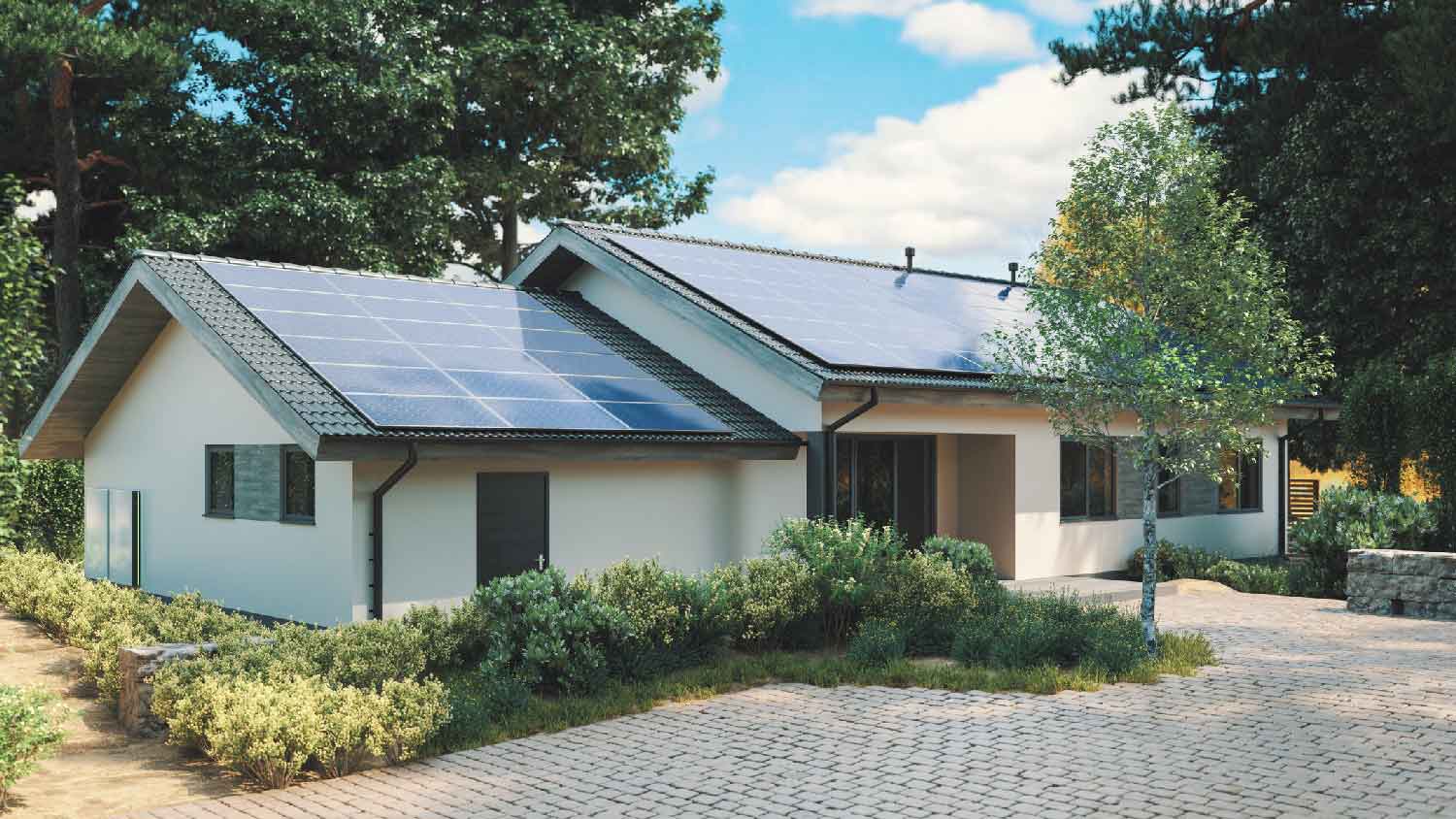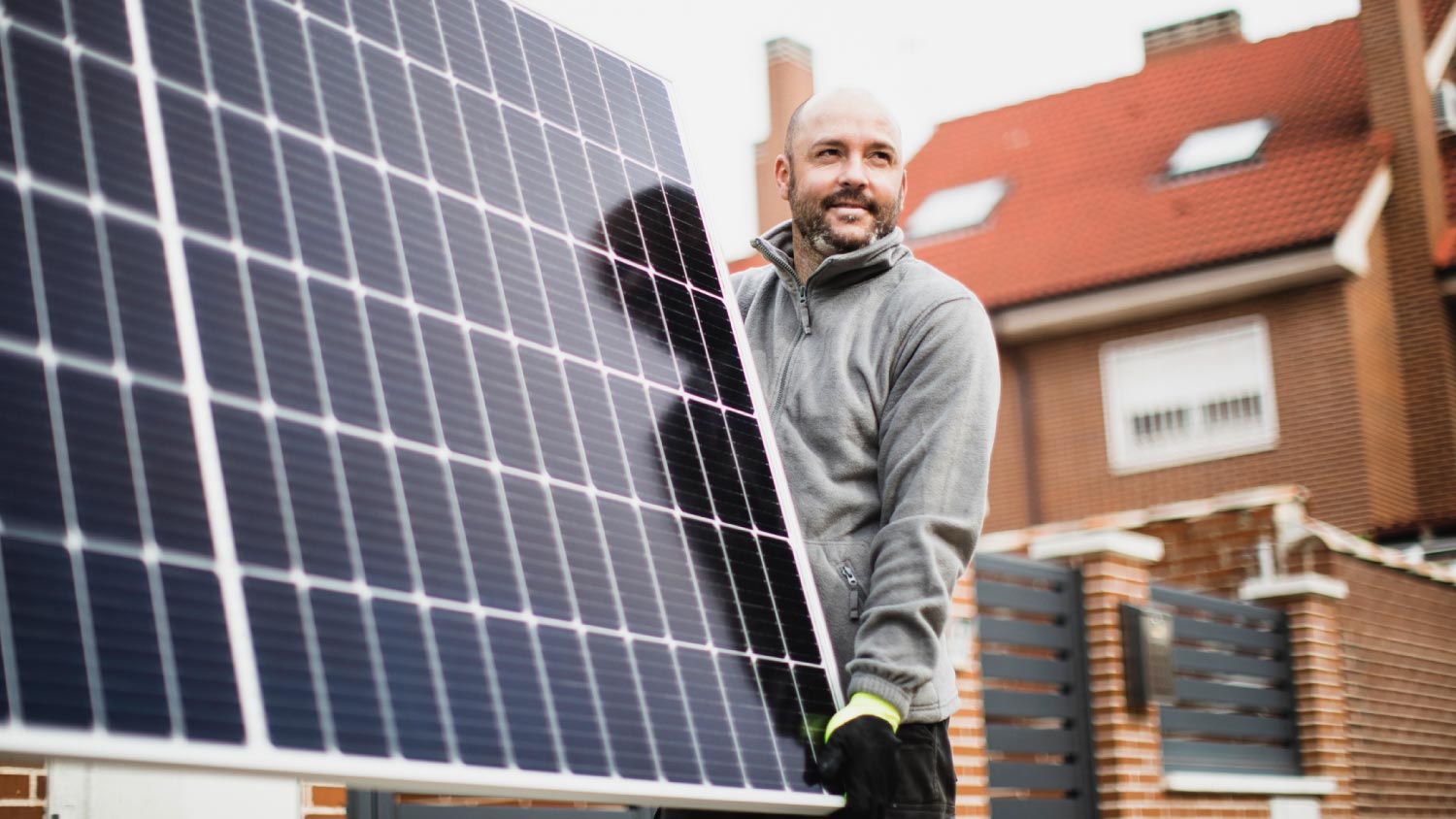Federal Solar Tax Credits in 2025: A Powerful Way to Maximize Your Savings
Reduce your tax bill while boosting your home’s energy efficiency


Federal solar tax credits let you claim 30% of the cost of a solar system as a tax credit.
You have until 2035 to install your system and claim credit.
You must own your solar system and claim credit the year it becomes operational.
Combine federal credits with utility rebates, net metering, state credits, and renewable energy credits to maximize savings.
Looking to power up your savings while powering your home with renewable energy? If you’re a homeowner considering solar, now is a great time to take advantage of federal solar tax credits. Switching to solar with this credit can save thousands on a solar panel installation. Here’s everything you need to know about how solar tax credits work, who qualifies, and how to tap into this valuable incentive.
What Is the Federal Solar Tax Credit?
According to Energy Star, the federal solar tax credit, or Investment Tax Credit (ITC), lets taxpayers claim up to 30% of the cost of a photovoltaic (PV) solar energy system as a credit on their federal tax returns. It offers a major financial incentive to switch from fossil fuels to renewable energy systems.
If you choose a renewable energy system for your home—like solar panels, solar water heaters, wind turbines, or geothermal heat pumps—you can save money through the Residential Clean Energy Credit. According to the Internal Revenue Service (IRS), the program offers a tax credit of up to 30% of the costs of certain clean energy systems installed in homes.
Tax credits for both programs were originally set to expire in 2022, but, as the White House Inflation Reduction Act Guidebook explains, they now last through 2034. However, the credit percentage for both programs will drop to 26% in 2033 and 22% in 2034 before phasing out entirely in 2035. So, you’ll need to install your renewable energy system by 2032 to claim the full credit.
How Do Solar Tax Credits Work?
Solar tax credits are a dollar-for-dollar reduction of your federal taxes. This is more valuable than deductions—which reduce taxable income, whereas tax credits directly lower the amount you owe for a given year—or rebates, which some solar dealers account for by raising sticker prices.
Some kinds of solar panel ROI, like energy savings and increased home value, take time. But the solar tax credit applies to your taxes the same year you install your panels, which can help offset initial costs and solar panel financing.
There is no maximum dollar limit to the tax credits. Additionally, if the tax credit exceeds the taxes you owe for the year you install your solar energy system, you can roll over the unused portion to future tax years.
Who Is Eligible for the Solar Tax Credit?

To qualify, you must own the solar energy system, not rent it. You will not qualify if you lease your solar panels or sign a power purchase agreement like those outlined by the U.S. Department of Energy.
The solar installation must be installed and used at your primary residence for full credit. All types of dwellings qualify, including homes, houseboats, and solar panels on mobile homes. If you install a solar array on a vacation home, secondary home, or rental property, you may qualify for partial credit.
You can only claim the credit for the year your system becomes operational. For example, if you hire a local solar panel company to install your system in 2024 but don’t activate it until 2025, you can claim the credit on your 2025 tax return.
Qualified Expenses for the Solar Tax Credit
The federal solar tax credit for homeowners applies to more than just solar panels, including the following:
Solar panels and related equipment, including inverters, wiring, and mounting hardware
Other renewable energy systems including wind and geothermal for homes
Labor costs for installation, including permit and inspection fees
Energy storage systems, including batteries, with a capacity of at least 3 kilowatt-hours (kWh)
Sales tax on eligible expenses
Expenses that do not qualify include roof repairs or replacement, tree trimming, and upgrades to roofing components like trusses and shingles—unless they specifically help with solar energy generation. Installing solar shingles would apply, but replacing traditional shingles would not.
Before installing solar, check the age and condition of roof shingles. If your roof is 20 years or older, you might want to consider replacing the roofing before installing the solar panels.
How Much Can I Save With Solar Tax Credits?
Federal solar tax credits allow homeowners and businesses to deduct 30% of the cost of solar and other renewable energy systems from their federal taxes. On average, solar panel installations in the U.S. cost between $20,000 and $30,000, which means homeowners save between $6,000 and $9,000 on average with the current renewable energy tax credits.
The installation of solar panels and other types of renewable energy systems can boost your investment right away with tax savings. Considering additional long-term energy savings, solar panel installation could be worth it for your home.
Can You Combine Solar Tax Credits With Other Solar Incentives?
Along with federal solar tax credits, you can benefit from state and local incentives, including rebates and exemptions. Additionally, many utility companies offer net metering that credits you for excess electricity your solar system generates and sends back to the grid. You can also sell renewable energy certificates (RECs) in some areas.
Here are additional ways to save when you install solar:
Utility rebates: Utility companies sometimes offer rebates on the cost of your solar installation.
Net metering: You might be able to get credit for excess energy that your solar system generates and exports to the local grid.
State tax credits: Many states offer solar tax credits separate from federal credits.
RECs: Earn money from renewable energy certificates for electricity your solar panels generate.
How to Claim Your Solar Tax Credit
You’ll need to complete IRS Form 5695 for Residential Energy Credits and include it with your federal tax return for the year you install your system. If a tax professional files your taxes for you, tell them about your solar installation and ask if you qualify for state and federal tax credits.
Consider making your deck wheelchair accessible with a wheelchair ramp or a vertical lift. This will ensure those struggling with mobility issues can enjoy the deck as much as the rest of the family members. Making your deck slip-proof for your older family members can significantly enhance their safety level. You can also consider adding sectioned handrails to provide additional support so it’s easier for those living with disabilities to move freely on the deck.
The height of your deck determines whether it needs railings or not. Regulations vary based on where you live, but most local building codes require decks over 30 inches high to have railings. Most areas also require railings to be at least 36 inches high. If your deck or porch is lower than 30 inches, you may be able to build it without railings.
Local building codes don’t list the number of steps a deck can have before it needs a railing. Instead, regulations are based on the height of the deck. In most areas, a deck over 30 inches high must have a railing. That equates to four to seven steps, depending on a deck’s stair height.















